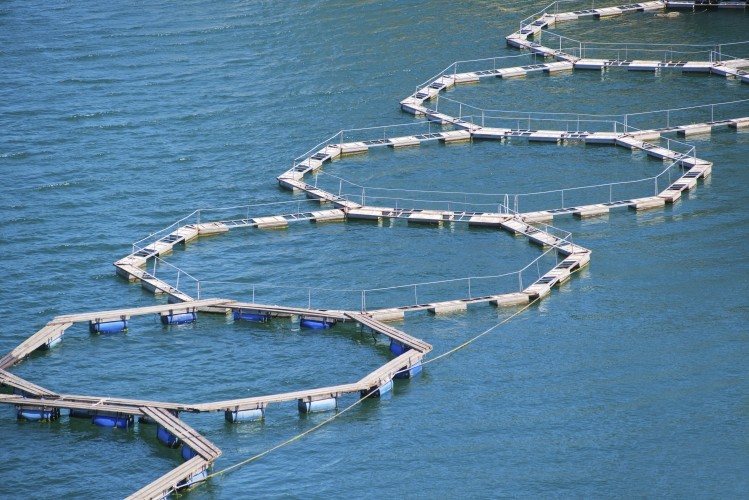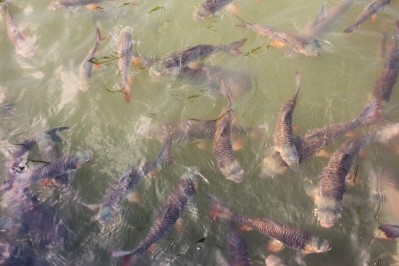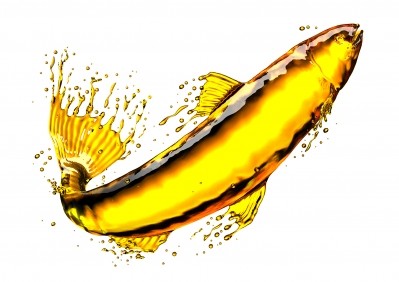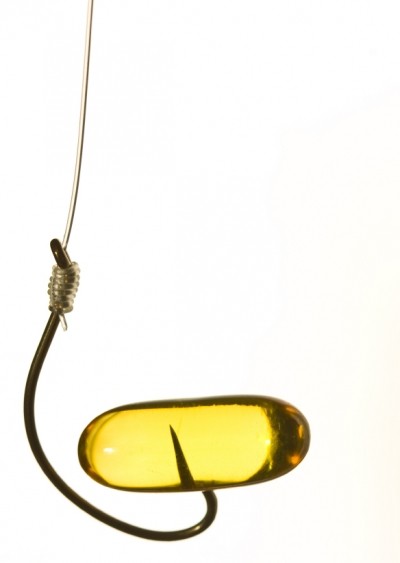Boosted dietary ARA levels up sea bass growth, health

An international team of researchers from Mexico and Spain examined the use of differing levels of arachidonic acid (ARA) in the diets of farmed, juvenile sea bass. The group published their work in the journal of Shellfish and Immunology.
“Thus, the aim of the present study is to assess the effects of graded levels of dietary ARA, supplemented from alternative sources, on European sea bass juvenile's fatty acid composition of plasma and head kidney leucocytes in relation to its immune potential,” they said.
The research team found that the amount of ARA in the diet influenced growth of the fish, along with immune system functioning, they said.
“Reducing dietary ARA levels below 1% markedly reduced European sea bass growth performance,” said the researchers. “Results obtained demonstrated the importance to supply the necessary quantity n-6 LC-PUFA, and not only n-3 LC-PUFA levels, in European sea bass diets, in relation to not only growth performance but also immune system function.”
Why ARA levels?
Long-chain polyunsaturated fatty acids (LC-PUFA) play roles in fish growth, lipid metabolism, cell membrane structure and functioning of the immune system, said the researchers. Much of the work done assessing LC-PUFA levels needed for fish production have focused on n-3 LC-PUFA like docosahexaenoic acid (DHA) and eicosapentaenoic acid (EPA).
Work on ARA has been overlooked as it is considered minor in comparison to DHA and EPA, they said. However, its importance in the diet is becoming better understood.
“ARA is recognized to be a main precursor of eicosanoids, the 2-series of prostaglandins (PGEs) and thromboxanes (TXs) and the 4-series of leucotrienes (LTs) and lipoxines thorough the action of cyclooxygenase (COX) and lipoxygenase enzymes,” said the researchers. “Eicosanoids are involved in the regulation of several physiological processes, including reproduction, growth and development, immune system or stress response, thus playing a crucial role on the entire fish life cycle.”
The acid also is linked to fish growth, survival and fatty acid levels in the tissue, they said. It has a role in reproduction, lipid metabolism, metamorphosis, pigmentation and immune functioning in presence of stressors.
“ARA deposition in membrane phospholipids influences cell membrane fluidity and stability by affecting several signaling pathways, ion transport, trafficking and vesicular transport and membrane-associated enzymes activities,” said the researchers. “Besides, ARA alters the transcription of gene-encoding proteins involved in lipid metabolism that directly affect immune-related transcription factors (i.e. modulating the NF-kB) and is involved in the assembly and activation of NADPH oxidase activity.”
In a previous study with guppies, enriched levels of dietary ARA boosted disease resistance, they said. And, it has been found to alter leukocyte distribution in striped bass facing disease challenge and improve superoxide dismutase (SOD) and lysozyme activities in Japanese eel.
However, little is known about the ARA needs of sea bass, they said. “Despite the importance of European sea bass on European aquaculture production, the information available concerning its nutritional requirements is still incomplete compared to other cultured fish species such as salmonids or carps, and particularly those addressing n-6 LC-PUFA effects on European sea bass immune system,” they added.
Methods and materials
In the feeding trial, 672 fish were given one of four diets for 60 days, said the researchers. The diets included a commercially available ARA oil at 0.5%, 1%, 2% and 4%.
At the end of the trial select fish were collected to establish survival and growth measures, they said. Blood and head kidney samples were gathered to check for leucocytes, immune parameters and to establish fatty acid levels.
Head kidney samples were analyzed for leucocytes, phagocytic activity, leucocytes peroxidase content and respiratory burst activity they said. Plasma samples were checked for prostaglandins.
Results
At the end of the feeding trial, fish getting the smallest about of dietary ARA had a lower final weight, were smaller in length and had reduced specific growth rate (SGR) compared to fish getting the other feeds, said the researchers. But fish survival was high in all groups.
“Dietary ARA levels below a 1% of total fatty acids reduced growth performance of European sea bass juveniles denoting the importance of ARA for a proper fish development,” they said. “Indeed, fish fed diet ARA0.5 presented similar head kidney and plasma ARA, EPA and DHA content than fish fed diet ARA1, regardless of the dietary intake. An increased selective deposition of particularly ARA in European sea bass juveniles seems to be related with a fish mechanism to compensate the dietary ARA deficiency in order to guarantee the proper head kidney leukocytes functioning.”
Dietary ARA did not alter plasma, saturates, monoenes or omega n-3, omega n-9 or omega n-3HUFA fatty acid percentages, but did change omega n-6 levels, they said. Fish getting a diet with 1% ARA had the lowest omega n-6 percentages and the highest omega n-3/omega n-6 ratio compared to the other diets.
Head kidney leucocytes profiles for fish getting the 1% and 2% diets had the highest levels of saturated fatty acids, while fish getting the 2% diet had the most monoenes, they said. The 4% diet offered the most omega n-6 content.
“The results obtained in the present study evidence the importance of an adequate supply of dietary n-6 LC-PUFA in diets for European sea bass juveniles in relation to maximize immune system function efficiency,” said the researchers.
Dietary ARA did not tend to alter head kidney leucocytes peroxidase content or respiratory burst activity, they said. But, the fish getting the 0.5% diet had reduced phagocytic index than those getting the 1% or 4% diet and plasma prostaglandins were correlated to the dietary ARA.
Source: Fish & Shellfish Immunology
Title: Supplementation of arachidonic acid rich oil in European sea bass juveniles (Dicentrarchus labrax) diets: Effects on leucocytes and plasma fatty acid profiles, selected immune parameters and circulating prostaglandins levels
DOI: 10.1016/j.fsi.2017.03.041
Authors: S. Torrecillas, L. Román, F. Rivero-Ramírez, M. Caballero, C. Pascual, L. Robaina, M. Izquierdo, F. Acosta, D. Montero














